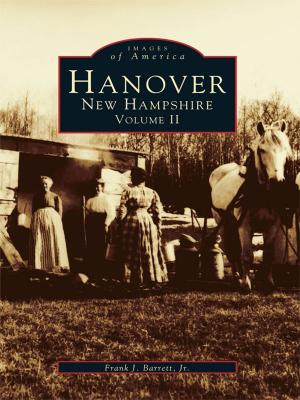Logging in Wisconsin
Nonfiction, Art & Architecture, Photography, Business & Finance, Economics, History, Americas, United States| Author: | Diana L. Peterson, Carrie M. Ronnander | ISBN: | 9781439661437 |
| Publisher: | Arcadia Publishing Inc. | Publication: | July 10, 2017 |
| Imprint: | Arcadia Publishing | Language: | English |
| Author: | Diana L. Peterson, Carrie M. Ronnander |
| ISBN: | 9781439661437 |
| Publisher: | Arcadia Publishing Inc. |
| Publication: | July 10, 2017 |
| Imprint: | Arcadia Publishing |
| Language: | English |
Wisconsin was the perfect setting for the lumber industry: acres of white pine forests (acquired through treaties with American Indians) and rivers to transport logs to sawmills. From 1840 to 1910, logging literally reshaped the landscape of Wisconsin, providing employment to thousands of workers. The lumber industry attracted businessmen, mills, hotels, and eventually the railroad. This led to the development of many Wisconsin cities, including Eau Claire, Oshkosh, Stevens Point, and Wausau. Rep. Ben Eastman told Congress in 1852 that the Wisconsin forests had enough lumber to supply the United States "for all time to come." Sadly, this was a grossly overestimated belief, and by 1910, the Wisconsin forests had been decimated. Logging in Wisconsin explores the 70 years when logging ruled the state, covering the characters who worked in forests and on rivers, the tools they used, and the places where they lived and worked.
Wisconsin was the perfect setting for the lumber industry: acres of white pine forests (acquired through treaties with American Indians) and rivers to transport logs to sawmills. From 1840 to 1910, logging literally reshaped the landscape of Wisconsin, providing employment to thousands of workers. The lumber industry attracted businessmen, mills, hotels, and eventually the railroad. This led to the development of many Wisconsin cities, including Eau Claire, Oshkosh, Stevens Point, and Wausau. Rep. Ben Eastman told Congress in 1852 that the Wisconsin forests had enough lumber to supply the United States "for all time to come." Sadly, this was a grossly overestimated belief, and by 1910, the Wisconsin forests had been decimated. Logging in Wisconsin explores the 70 years when logging ruled the state, covering the characters who worked in forests and on rivers, the tools they used, and the places where they lived and worked.















